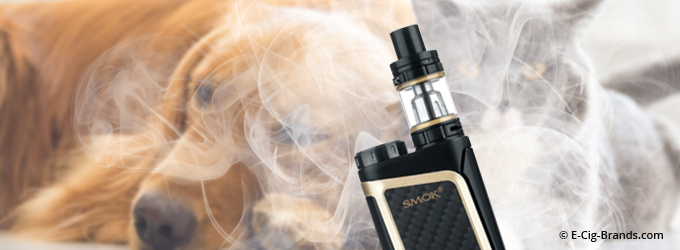
The use of e-cigarettes, or “vaping”, as most of us know it, has taken off in the last ten years or so. This is mainly due to many smokers finding e-cigarettes an effective alternative to nicotine gums, patches and acupuncture to help them stop smoking. The trend has attracted many “non-traditional smokers” as well, with aficionados enjoying the wide variety of flavours, equipment and other associated merchandise, often sans nicotine. But since vapours are given off that can be absorbed by our pets in a variety of ways, is it safe to vape around pets and what measures need to be observed to ensure that our cats, dogs, birds, reptiles and fish remain healthy as we indulge?
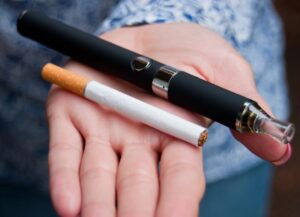
How Do E-Cigarettes Work?
E-cigarettes, or “vapes”, are battery-operated vaporisers in various forms that resemble long cigarettes, pipes, cigars, pens or USB memory sticks and simulate smoking. They consist of a mouthpiece, reservoir (or cartridge filled with “e-liquids/juice”), a heating element (“atomiser”) and a power source (battery). When the mouthpiece is used, the heating element heats the liquid, which is vaporised and inhaled. The resulting aerosol is a cloud of “smoke” intended to provide the “vaper” with the satisfaction of smoking. The e-liquid contains various ingredients, including nicotine, flavourings, glycerine, and propylene glycol (known as “PG”), among others. Most e-cigarettes have nicotine, although some are “nic-free” and only contain flavourings. The e-liquid is sold in pre-packed cartridges or bottles designed for the user to refill cartridges.
Inhalation
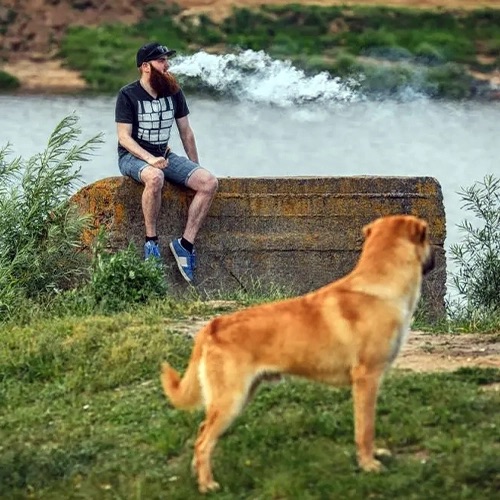
Many pet parents who enjoy vaping worry that inhaling vapours may be detrimental to their animals. While the effects of second-hand cigarette smoke on pets are well-documented (including asthma and other respiratory disorders, as well as damage to lung tissue as a result of long-term exposure), no studies have, as yet, shown that exposure to e-cigarette vapours is harmful to pets. The evidence remains “hazy” at best… However, this most certainly doesn’t suggest that it’s risk-free. Cats, dogs and other pets have smaller lung capacities than humans and are more sensitive to inhaled irritants. The protective mechanisms in our pets’ delicate respiratory systems are not as well-developed as ours, leaving them vulnerable to the side effects of inhaled chemicals. Pets also breathe faster than we do, which means they inhale vapour more quickly. Additionally, pets who already struggle with respiratory conditions like asthma or chronic airway inflammation or those genetically predisposed to respiratory illnesses may be at increased risk of lung damage if exposed to e-cigarette vapours. Allergic animals are also likely to react negatively to vaping.
Experts agree that vapers should err on the side of caution and ensure they avoid vaping around their pets, particularly in areas without sufficient ventilation.
Ingestion
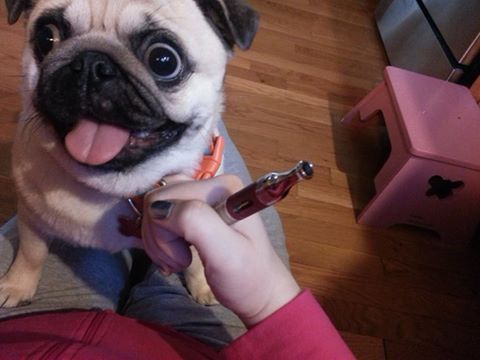
Although some vape juices are “nic-free”, the majority do contain varying levels of nicotine, and ingestion, rather than inhalation, poses a potentially life-threatening problem. Nicotine is toxic to pets, and swallowing any kind of nicotine-bearing product, whether a discarded cigarette butt in the park or a yummy-smelling vape cartridge, is dangerous. The toxic dose is as low as 1-9.2mg/kg of the pet’s body weight, which means that just a quarter teaspoon of nicotine-containing e-juice can poison a dog weighing 18kg! Vape cartridges typically contain the equivalent nicotine concentration of 2 cigarettes – purchased in packs of 5 to 100; this can quickly spell tragedy if left within reach of a curious pup. A medium-sized dog who eats just one cartridge will show signs of poisoning within 15-60 minutes. These include vomiting, diarrhoea, agitation, elevated heart rate, rapid breathing, tremors, seizures and possibly coma or cardiac arrest. In smaller dogs and cats, the range of symptoms would be much more severe and could easily result in death. Nicotine is a fast-acting toxin, and pet parents who suspect their little buddy have swallowed even a tiny amount should seek veterinary support immediately. Early treatment is essential for your pet to have a chance at recovery.
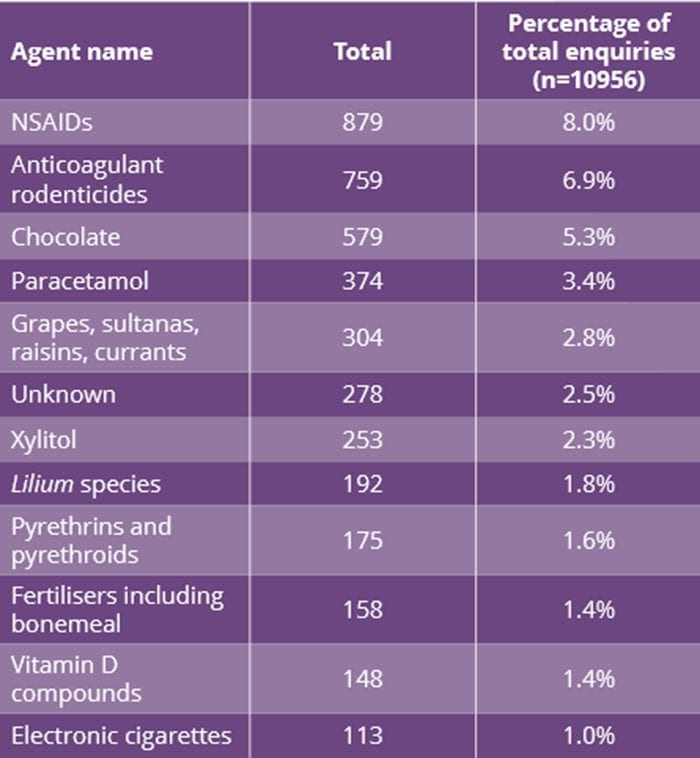
Remember that pets have claws and sharp teeth – just because your e-liquid container is child-proof doesn’t mean it’s pet-proof. Pet poison helplines have reported a considerable increase in calls related to nicotine poisoning since the vaping trend took off, where pets have ingested either the e-cigarette itself, the plastic cartridge, or the cartridge refills filled with e-juice. They strongly recommend that pet parents trying to quit smoking take particular care when using, storing and disposing of nicotine products, including vapes, empty cartridges, nicotine gums, lozenges and patches. They also advise vaping in well-ventilated outdoor areas away from kids and pets and changing e-cigarette cartridges in such a way as to avoid them accidentally falling on the ground and being snatched up by an inquisitive pet.
Treatment For Nicotine Poisoning
The first step is to try and induce vomiting a.s.a.p. This could be done at Cronulla Vet Clinic or your nearest vet. After vomiting, activated charcoal is commonly administered to reduce the chances of (re)absorption into the body. Additional support treatments may be needed as well, such as other support medication and intravenous fluids may be introduced to aid circulation and help flush out the nicotine. The pet would need to be carefully monitored thereafter. If they survive the first 4 hours, they are usually out of the woods. After 16 hours, all nicotine will be out of the system – it is metabolised by the liver and secreted in urine. Complete recovery is possible in a day or two but is entirely dependent on the pet receiving veterinary care as soon as possible after swallowing the nicotine product.

Safe Vaping Around Pets
- Keep e-cigarettes and all associated products and equipment out of sight and out of reach of pets, ideally locked away. Remember that many pets can climb onto high surfaces or get into cabinets. Dogs, in particular, may find the variety of e-juice flavours enticing and will sniff them out. Cats would be more likely to find a discarded cartridge tempting to bat around as a plaything, then lick the residue off their paws when grooming.
- Don’t keep vape cartridges on your person – animals have a much keener sense of smell than we do, and they will easily find them.
- Don’t refill cartridges in the presence of your pet. This will prevent them from pouncing on any item that accidentally falls or licking up spilled liquid.
- Don’t overuse your vape in your pet’s presence, especially in a confined space, and never blow the vapours directly into a pet’s face, even if the animal appears to enjoy it.
- Keep propylene glycol (PG) away from cats, in particular, as they are uniquely sensitive to large doses.
- Train young pets to “Leave It!” and “Drop it” as early as possible so they respond without hesitation when you cue them.
- Contact your vet and poison helpline immediately if you suspect your pet has swallowed a nicotine product or is showing any unusual symptoms.
- Keep pets’ food and water bowls out of areas where you vape to avoid residue settling in them and being ingested.
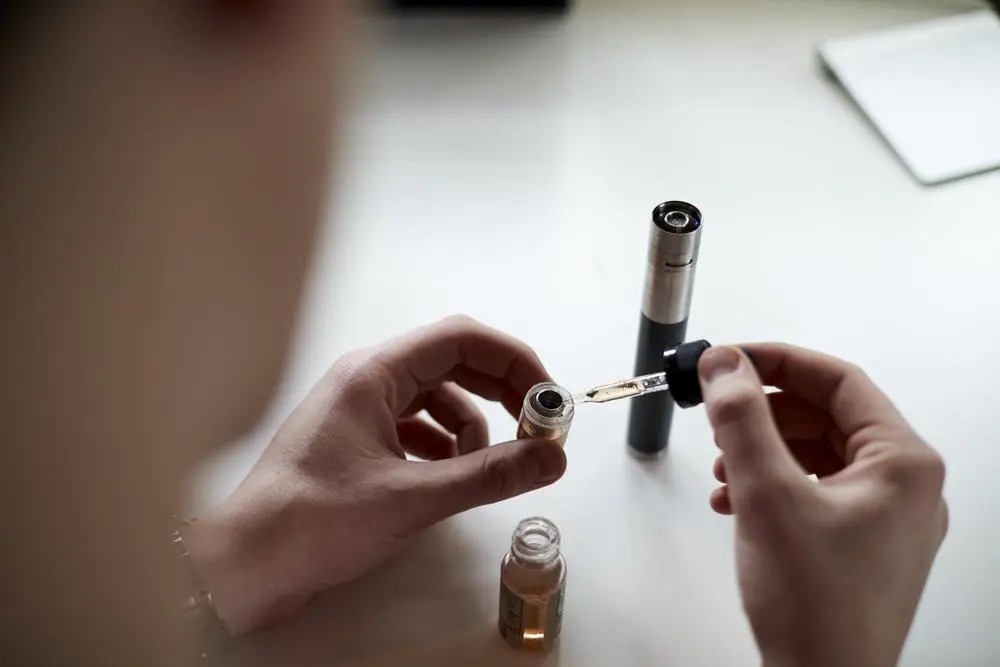
Vaping Around Birds, Reptiles and Fish in Uncovered Tanks
Birds have exceptionally sensitive respiratory tracts and are particularly vulnerable to absorbing chemicals as they breathe. Cats may inhale and/or ingest vaping residue when they groom, and birds do the same when preening their feathers. Even nic-free variants can be problematic for allergic or sensitive individuals.
The same principles apply for reptiles and other small animals as do for dogs and cats – never vape in confined spaces with these pets, don’t allow vape liquid to come into direct contact with their skin and keep tanks covered to prevent the entry of vapours.
Nicotine and other toxins from second-hand e-cigarette vapours easily dissolve in water, and small amounts can harm fish. Ensure that tanks are covered or vape well away from open tanks.
While the jury is out on the possible side-effects of nic-free vaping products on animals, it’s always advisable to adhere to the proper safety measures when vaping around pets. Provided e-cigarette users are aware of all the potential dangers and take the necessary steps to avoid them, they can enjoy vaping without worrying that they may be causing distress or ill-health in their beloved companion animals.
